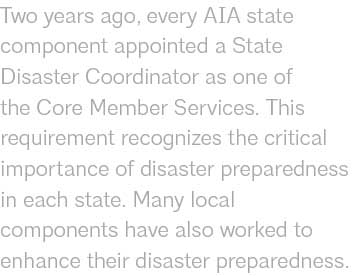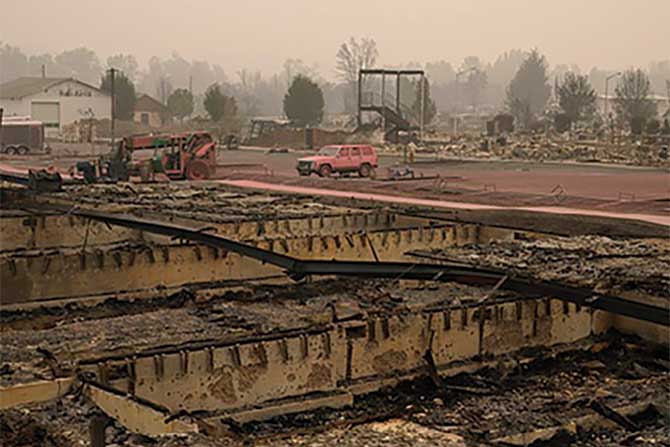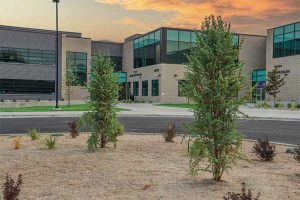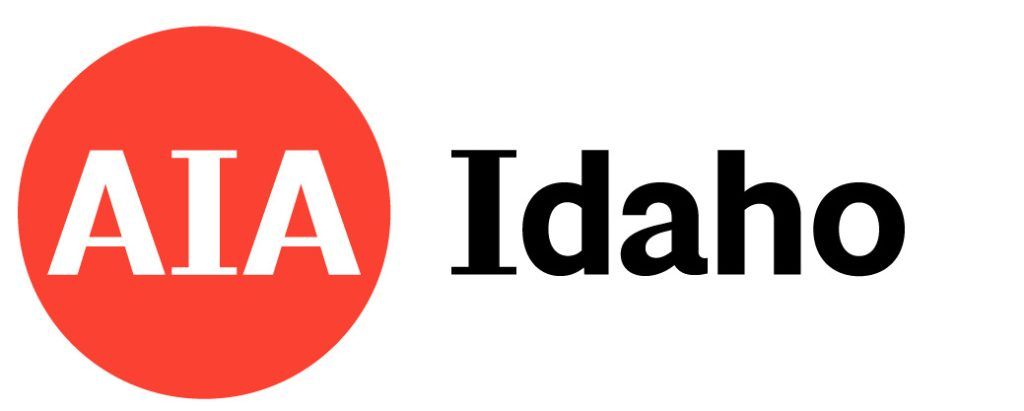By Ian Hoffman, AIA Idaho Disaster network coordinator and Anna Foster, AIA Idaho Executive Director
2020 has been a whirlwind year, testing us all in our capacity to respond to a global disaster — and on top of others, including earthquakes, wildfires, floods, and civil unrest. As this challenging year comes to a close, it’s an opportunity to look back at what we’ve collectively accomplished, where we’ve found roadblocks, and how we can work together in the year ahead to build our communities’ resilience across the country.
Two years ago, every AIA state component appointed a State Disaster Coordinator as one of the Core Member Services. This requirement recognizes the critical importance of disaster preparedness in each state. Many local components have also worked to enhance their disaster preparedness. We are collectively stronger when information, lessons learned, and examples are shared throughout the AIA Disaster Assistance Network. Whether the issue is COVID-19 response and recovery, wildfire recovery technical support, new policies and legislation, evolving challenges and emerging partnerships or something in between, AIA is not standing in the back row.
As a first step to engage in the National Disaster Assistance Network, AIA Idaho sponsored our first bill ever, “The Good Sam” bill, which became effective in July 2020.

What is a Good Samaritan (Good Sam) Law?
Good Sam Law reduces liability to Idaho professionals while serving communities in times of crisis. Without proper legislation in place, volunteers are exposing themselves to liability when performing voluntary services. AIA Idaho wrote and supported house bill 529, also known as the Good Samaritan Law, to allow licensed architects, professional engineers, and contractors the ability to help our fellow Idahoans in times of crisis.
Why now?
Without this change in the law, the state and federal government would have to look outside of Idaho for help when help is available here in the state. Architects are ethically obligated to assist in protecting the health, safety and welfare of the public. In many states, architects, engineers, and contractors are part of the state disaster response network and voluntarily assist their communities. Their knowledge of structural, mechanical, electrical, civil, or other related fields is invaluable in determining our residential and commercial structures’ safety.
How will this affect Idaho citizens?
In times of disaster, building departments are often overwhelmed and need assistance to help people get back into their homes faster. Professionals such as architects, engineers, and contractors trained in structural assessment and building evaluation can provide much-needed support to the building inspectors and officials. Faster response times mean citizens can return to their homes and work safely, unburdening their potentially overwhelmed neighbors and trusted state officials and ensuring safety during crisis or disaster.
Who will be impacted and who won’t?
Those communities impacted by crisis or disaster will now be able to rely on trusted, licensed and trained local professionals such as architects, engineers and contractors to ensure their safety and well-being. The service rendered applies to the entire building or system’s structural integrity or any portion thereof affecting public safety. The service is provided during the time in which the emergency exists.
Why was this change needed?
Idaho is one of the last remaining states to adopt the Good Samaritan laws that protect professionals, such as architects, engineers and contractors, when an emergency is declared. This expansion would allow trained volunteers the ability to help their fellow Idahoans at no cost to the taxpayer.
The efforts to pass this legislation were endorsed by AIA Idaho and construction industry partners: ACEC, AGC, Idaho BCA and other organizations. Our next step is to offer the Safety Assessment Training (SAP) to all eligible Idahoans and make sure that as many of our members as are willing receive this important training. The bill was written as follows:
HOUSE BILL NO. 529 BY WAYS AND MEANS COMMITTEE AN ACT RELATING TO PARTIES TO ACTIONS; AMENDING CHAPTER 3, TITLE 5, IDAHO CODE, BY THE ADDITION OF A NEW SECTION 5-345, IDAHO CODE, TO PROVIDE CIVIL IMMUNITY FOR ARCHITECTS, ENGINEERS, AND CONTRACTORS IN CERTAIN INSTANCES AND TO PROVIDE APPLICABILITY.
Be It Enacted by the Legislature of the State of Idaho:
SECTION 1. That Chapter 3, Title 5, Idaho Code, be, and the same is hereby amended by the addition thereto of a NEW SECTION, to be known and designated as Section 5-345, Idaho Code, and to read as follows:
IMMUNITY FOR AID DURING AN EMERGENCY. (1) No architect, engineer, or contractor may be held liable for personal injury, wrongful death, property damage, or other loss related to any architectural, structural, electrical, mechanical, construction, design, or other professional service provided by the architect or engineer, voluntarily or without compensation, or the contractor at the request or approval of a national, state, or local public official in response to a declared national, state, or local emergency, a disaster, or a catastrophic event. The provisions of this subsection shall apply to services rendered within ninety (90) days following the end of the declared emergency, disaster, or catastrophic event unless extended by executive order of the governor.
(2) Limited liability under this section shall not apply if the injury, death, or damage is the result of unreasonable acts, gross negligence, or willful or wanton misconduct or if the architect, engineer, or contractor did not act as a reasonable architect, engineer, or contractor would have under the same or similar circumstances.


Author
Ian Hoffman, AIA Idaho Disaster network coordinator and Anna Foster, AIA Idaho Executive Director










